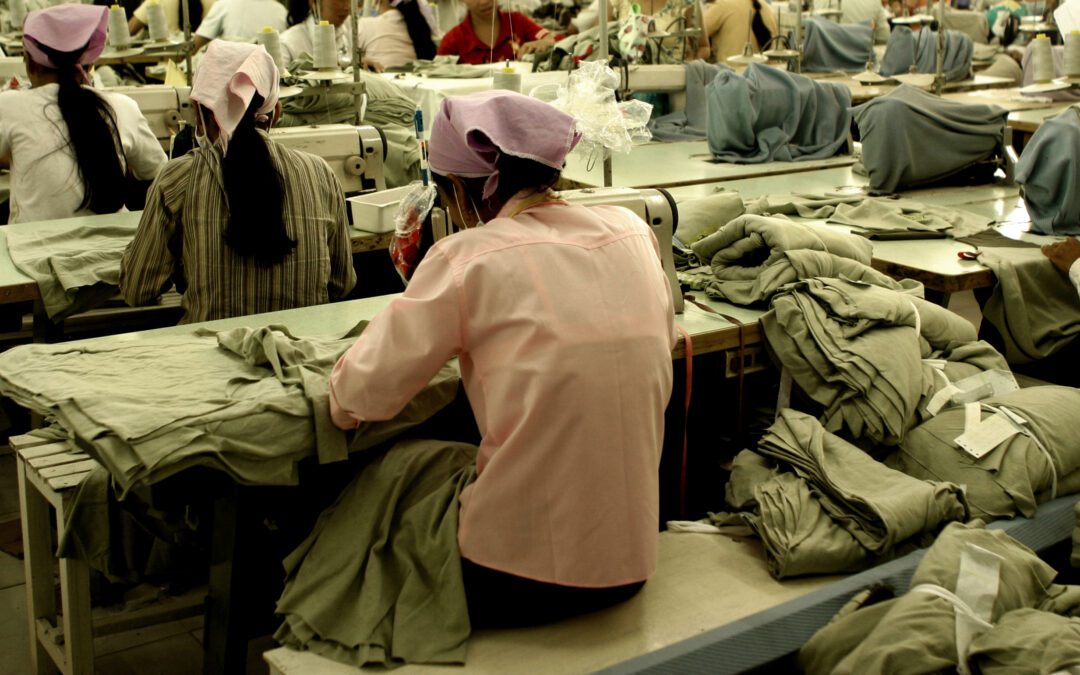The apparel industry is the 4th biggest sector in the world, providing jobs for around 60 million people, with around 80% of those being women. Despite the size of the industry, women who work in this sector often face low wages, long working hours, poor working conditions, discrimination, and harassment. Furthermore, the situation is compounded by the fact that a significant proportion of female garment workers are based in countries with inadequate labor laws and pervasive gender-based discrimination, which exacerbates their challenges. Empowering female workers in the apparel industry is key for any company in the industry.
The International Labour Organization (ILO) reports that women in the textile, clothing, and footwear sectors earn on average 20% less than men, even when they are performing the same job. Women workers in the apparel industry are often employed in precarious and insecure jobs, with no social protection or benefits. This can make it difficult for them to plan for their futures, take care of their families, and invest in their own education and skills.
In addition, women in the apparel industry frequently face discrimination and harassment, particularly in countries where gender inequality is common. According to a study by ILO, one in five women workers in the garment industry in Cambodia reported experiencing sexual harassment. Such harassment can be both physical and verbal, leading to mental health issues and a sense of isolation, which can further impact their productivity and well-being.
Gender-responsive procurement as tool to empower female workers
Gender-responsive procurement (GRP) and sourcing is one approach that has been proposed to promote gender equality and empower female workers. By ensuring that women workers are treated fairly and equally to men, companies can create safe and decent working conditions and provide training and development opportunities for workers within their supply chain. This approach can help to address the challenges that female workers face, such as low wages, long working hours, discrimination, harassment, and lack of job security. In this context, what specific measures can be implemented to support the empowerment of female workers in the apparel industry?
- Promoting Gender Equality. GRP policies can help to promote gender equality by requiring suppliers to comply with local laws and international labor standards. These policies should include provisions that protect women workers from gender-based discrimination and harassment, ensure equal pay for equal work, and support the recruitment and retention of women in leadership positions.
- Providing Safe and Decent Working Conditions. Gender-responsive procurement and sourcing can help to ensure that women workers are provided with safe and decent working conditions that are free from discrimination, harassment, or violence. Companies can conduct regular audits of their suppliers’ factories to identify and address any health and safety issues, ensuring that workers are not exposed to dangerous chemicals, dust, or fumes. In addition, companies can provide training on occupational health and safety, including the proper use of protective equipment, to ensure that workers are protected from workplace hazards.
- Paying Fair Wages. GRP can help as a tool to ensure that women workers are paid fair wages that are commensurate with their skills and experience. Companies can require suppliers to pay a living wage that covers the basic needs of workers and their families, including food, housing, healthcare, and education. By doing so, companies can help to address poverty among women garment workers, who are often the sole breadwinners in their families.
- Providing Training and Development Opportunities. Gender-responsive procurement and sourcing can help to provide training and development opportunities for women workers, enabling them to acquire new skills and advance their careers. Companies can support training programs that focus on leadership development, technical skills, and financial literacy. These programs can help women workers to gain the skills they need to move into higher-paying and more secure jobs, such as management or technical roles.
Empowering female workers in the apparel industry through gender-responsive procurement and sourcing not only benefits the workers themselves but also the companies that employ them. By improving working conditions, providing training and development opportunities, and promoting gender equality, companies can increase their productivity, performance and quality.
Moreover, implementing gender-responsive procurement and sourcing practices can enhance your brand reputation and attract customers who value social and environmental responsibility. A recent survey by Cone Communications found that 87% of consumers would purchase a product because a company advocated for an issue they cared about, and 88% would be more loyal to that company. This indicates that implementing gender-responsive procurement and sourcing practices can not only improve the lives of female workers but also benefit your business in the long run.
In conclusion, the apparel industry has a significant impact on the lives of millions of women worldwide who work in factories producing clothing for global brands. Female workers in the industry face numerous challenges, including low wages, long working hours, discrimination, harassment, and lack of job security. Gender-responsive procurement and sourcing practices can help address these challenges and promote gender equality by ensuring that women workers are treated fairly and equally to men, provided with safe and decent working conditions, paid fair wages, and given training and development opportunities. By implementing these practices, companies can not only contribute to the achievement of the Sustainable Development Goals but also enhance their brand reputation and attract socially responsible consumers.
The journey towards gender-responsive procurement and sourcing practices is not without its challenges, but it is a necessary step towards creating a more just and equitable world. By working together, we can build a more sustainable and inclusive future for all.

